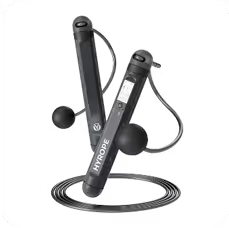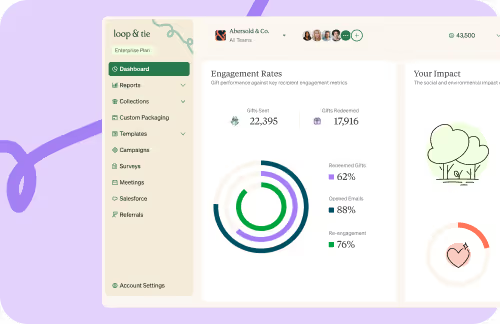Measuring the ROI of Employee Appreciation Programs
Discover the key metrics and strategies to measure the return on investment of employee appreciation programs in software companies.
Understanding the Importance of ROI in Employee Appreciation Programs
Employee appreciation programs play a crucial role in fostering a positive and productive work environment. They are designed to recognize and reward employees for their hard work and dedication, boosting morale and motivation. For companies to continue to invest in employee appreciation programs, it is essential to understand the importance of measuring the return on investment (ROI) of these programs. By quantifying the success of employee appreciation initiatives, companies can make informed decisions about investing in their employees and ensure that their efforts to build a culture of appreciation are yielding the desired outcomes.
Employee appreciation programs - while designed to improve qualitative aspects of the workplace - still need quantitative elements. These quantitative elements provide valuable insights into the effectiveness of your employee appreciation initiatives. For many HR leaders, these insights help companies assess the impact of their investments, identify areas for improving the employee lifecycle, and make data-driven decisions around areas of improvement in your team's performance. Aligning your entire company around the ROI in employee appreciation programs helps each function optimize their employee engagement which in turn, improves the entire employee experience for the organization as a whole.
Identifying Key Metrics for Measuring ROI
To measure the ROI of employee appreciation programs in software companies, it is crucial to identify key metrics that align with the company's goals and objectives. These metrics can vary depending on the specific program and its intended outcomes. Some common metrics for measuring the success of employee appreciation initiatives include:
- employee engagement,
- productivity levels,
- employee retention rates,
- overall job satisfaction, and
- overall employer satisfaction
Employee appreciation programs are not designed to directly enhance or improve these metrics. Instead, they're designed to be part of a cohesive and employee lifecycle management philosophy and program. Measuring your employee engagement and productivity before and after implementing your employee appreciation programs will provide tangible metrics to support the return on investment. For example, employees who feel they are genuinely appreciated and are regularly recognized and/or rewarded see an increase in productivity and overall engagement. Additionally, monitoring employee turnover rates before and after implementing appreciation programs will help you measure and quantify the success your programs are having to retain top talent. Retaining top talent and improving overall performance have tangible cost savings for an organization the likes of which can help improve the overall capital efficiency and scale of a company.
Implementing Effective Strategies to Maximize the Adoption of your Program
Implementing effective strategies is crucial to maximize the adoption and success of employee appreciation programs in software companies. One key strategy is to ensure that the program aligns, supports, and enhances the company's culture and values. The best way to ensure your programs align with your values is to involve employees from various backgrounds, departments, and levels of seniority in the design, implementation, feedback, and iteration processes of your program. Their early and frequent involvement ensures the employee appreciation programs meet their needs and preferences, while also ensuring consistent and frequent adoption.
Another effective strategy is to provide regular visibility into the outcomes of your initiatives. Share your insights. Highlight the successes and opportunities within your programs to demonstrate how important and committed your organization is to building an integrated program that benefits the needs of your team. By being transparent and offering a forum for collaboration and feedback on your programs, you'll increase program engagement and participation, ultimately enhancing the return on your initiatives.
Collecting Feedback from your Team to Improve your Program
Collecting feedback from employees is essential for continuously improving the employee appreciation program and maximizing its ROI. There are several ways to gather feedback from your team. Anonymous surveys give your team the opportunity to speak freely and share their thoughts about the programs you're introducing. focus groups give your team the or one-on-one conversations. It is important to create a safe and open environment where employees feel comfortable sharing their thoughts and suggestions.
Do not be afraid to receive constructive feedback about your programs. Feedback is the most important ingredient to insuring a return on your investment in your employee appreciation programs. Feedback helps to identify areas for improvement and gives you the opportunity to make any necessary adjustments to the program. Additionally, feedback on what's working helps you continue to make more investments or iterations to your programming to support the areas your team is experiencing direct benefits.
This feedback loop ensures that the program remains relevant, impactful, and aligned with employees' needs and expectations. Regularly collecting feedback and acting upon it demonstrates a commitment to the employee experience and that commitment is what ultimately builds trust and loyalty within your team.
Future Trends in Employee Appreciation Programs and ROI
The field of employee appreciation programs is growing and evolving just like the workforce and the individuals therein. One emerging trend we're seeing is the use of technology to enhance and streamline employee appreciation initiatives. This includes platforms and tools that facilitate peer-to-peer recognition, gamification elements to increase engagement, and of course - gifting.
Another future trend we've been acutely aware of is the focus on holistic well-being. Employee appreciation programs are increasingly incorporating elements that support employees' physical, mental, and emotional well-being. This can include wellness support groups, mindfulness programs, and/or flexible work arrangements. By getting creative and trying new approaches to demonstrating your appreciation for your employees, you'll see long and lasting returns on the investments in your programs.
Read our 2024
Impact Report








.webp)















